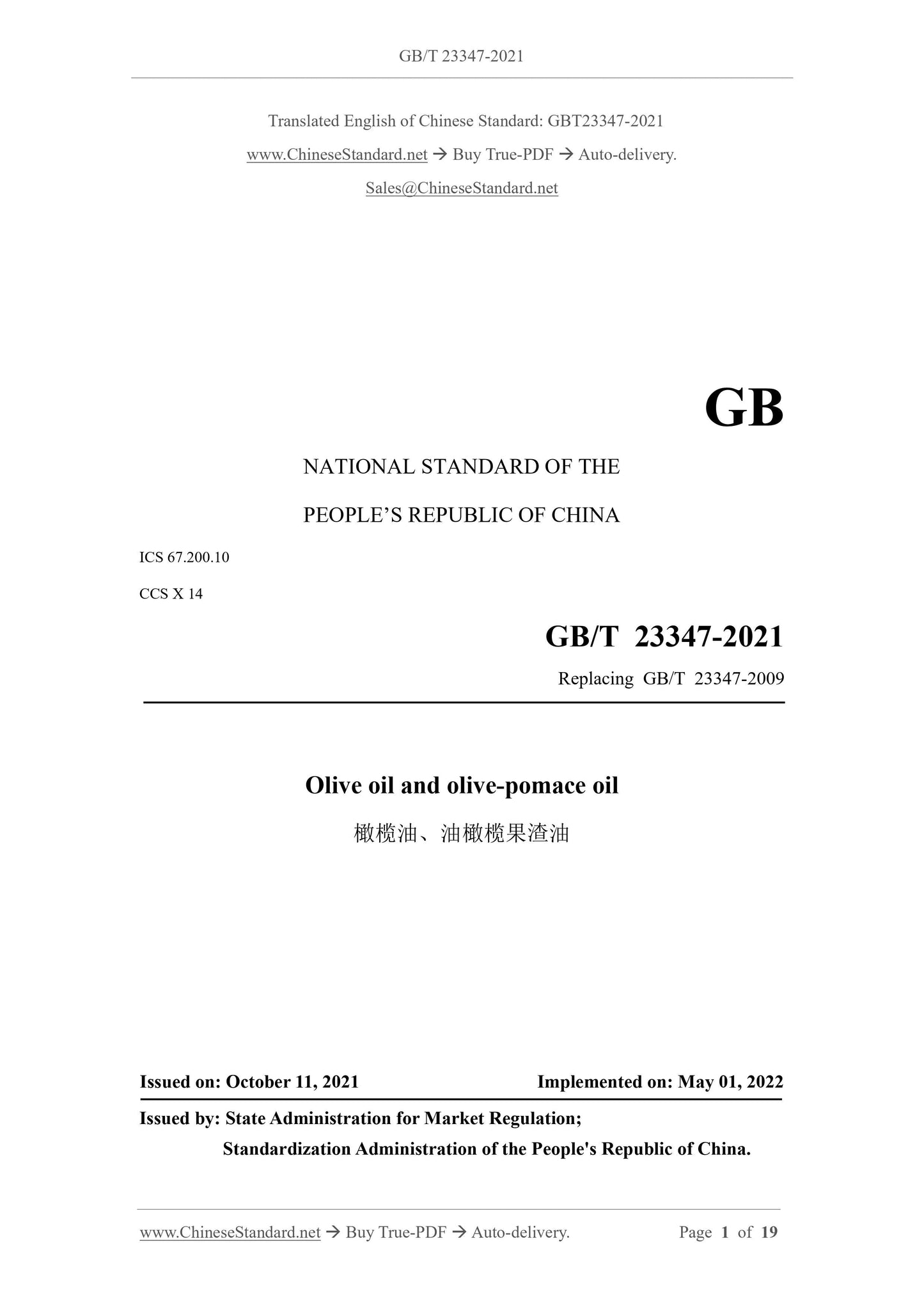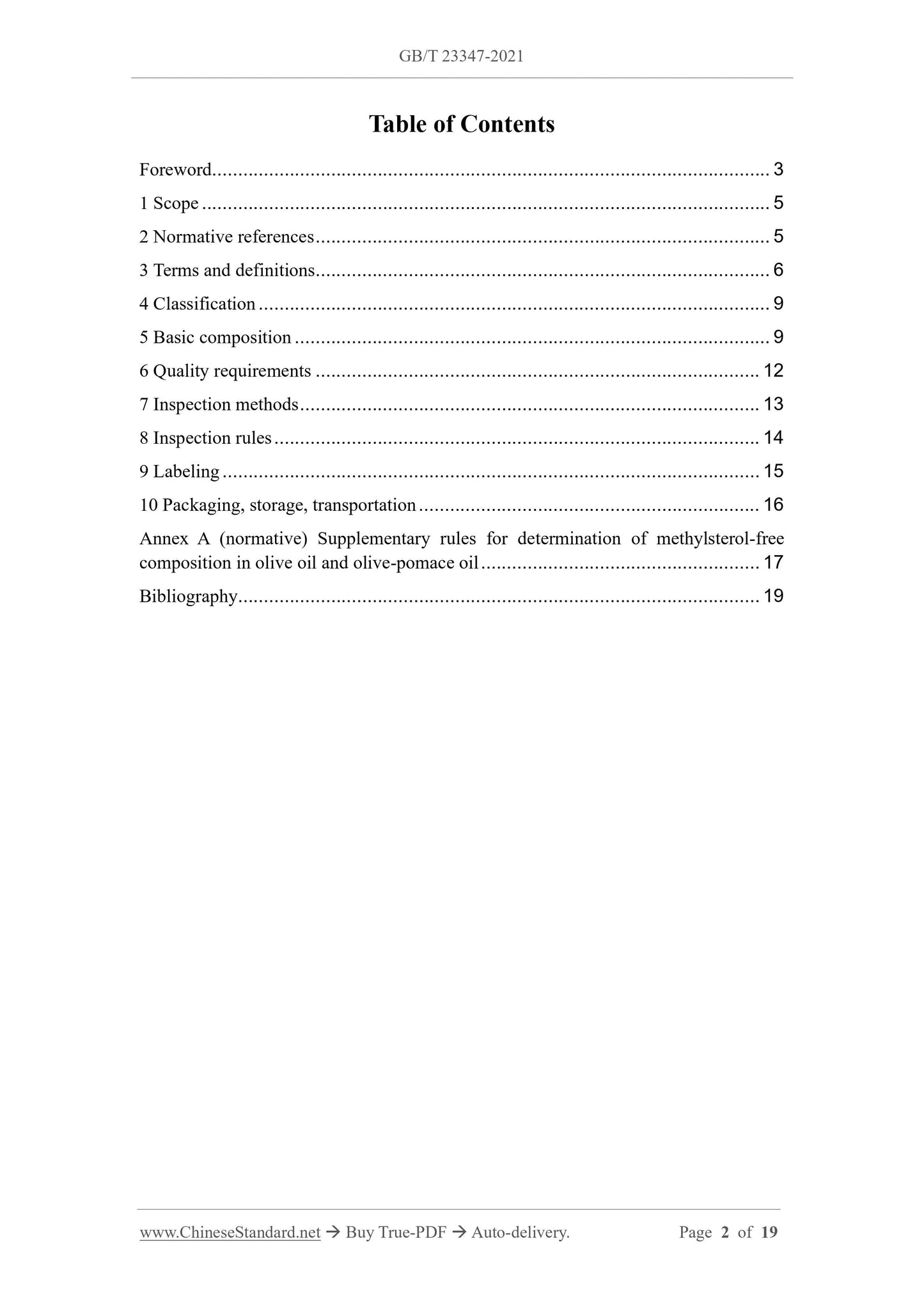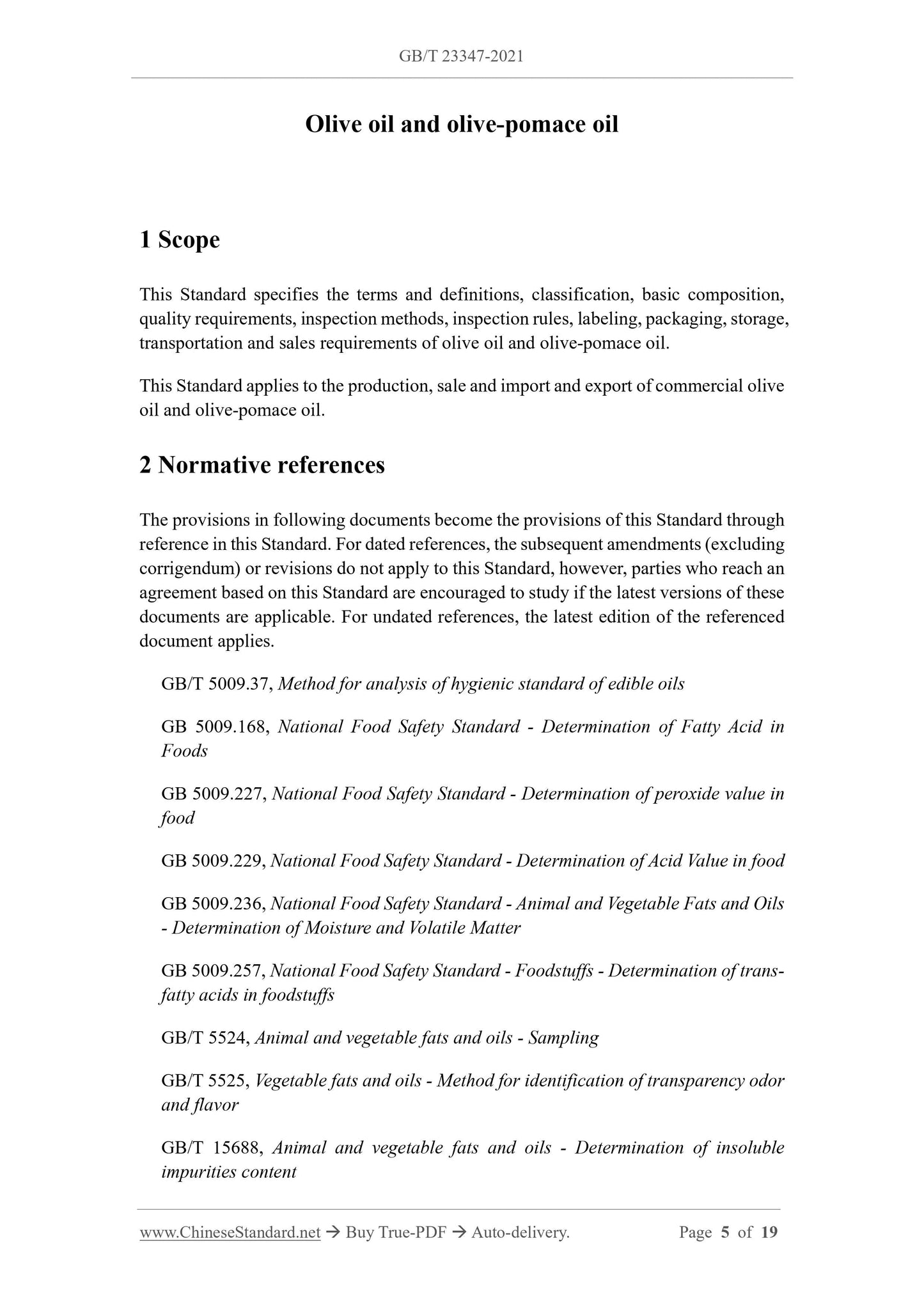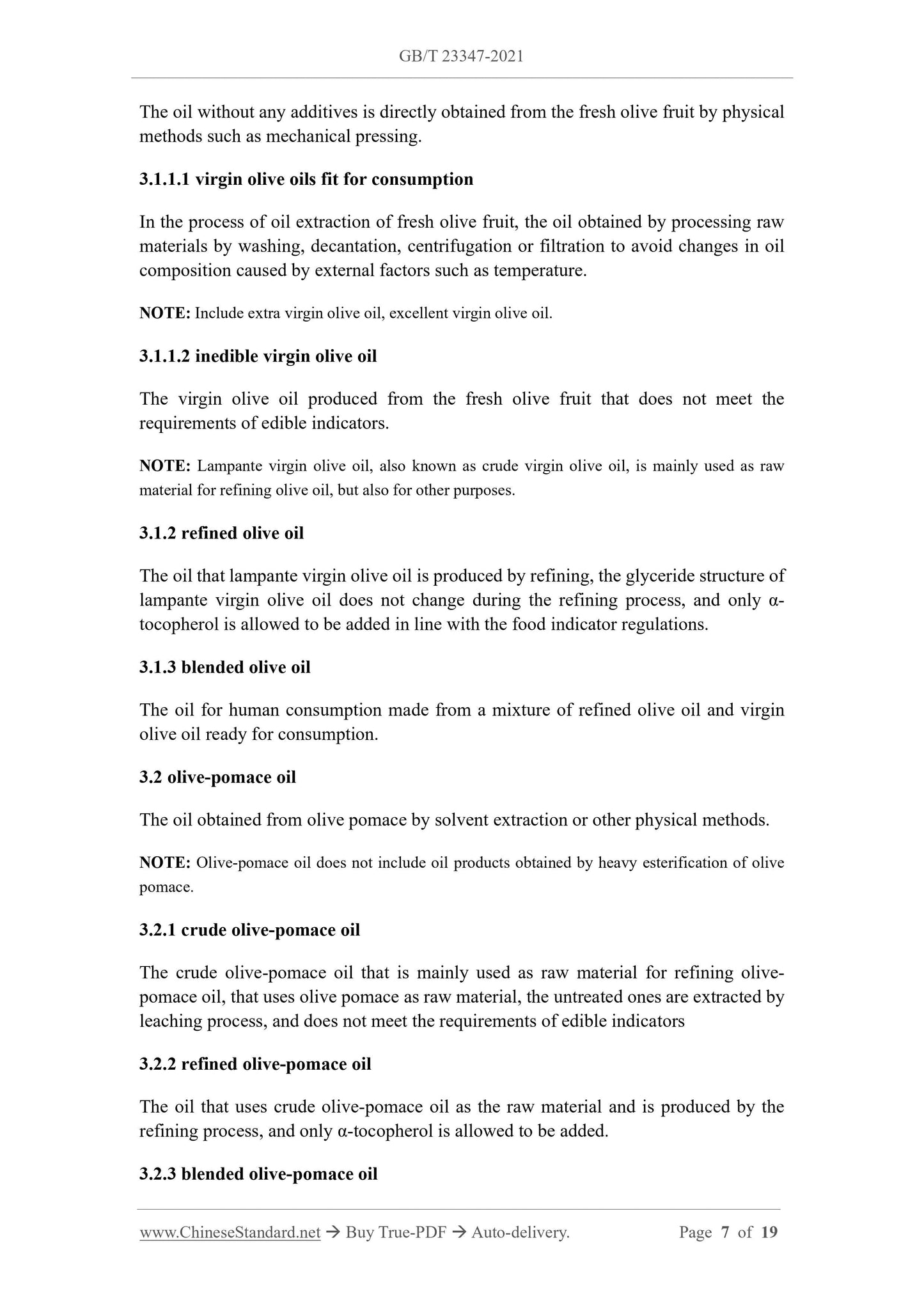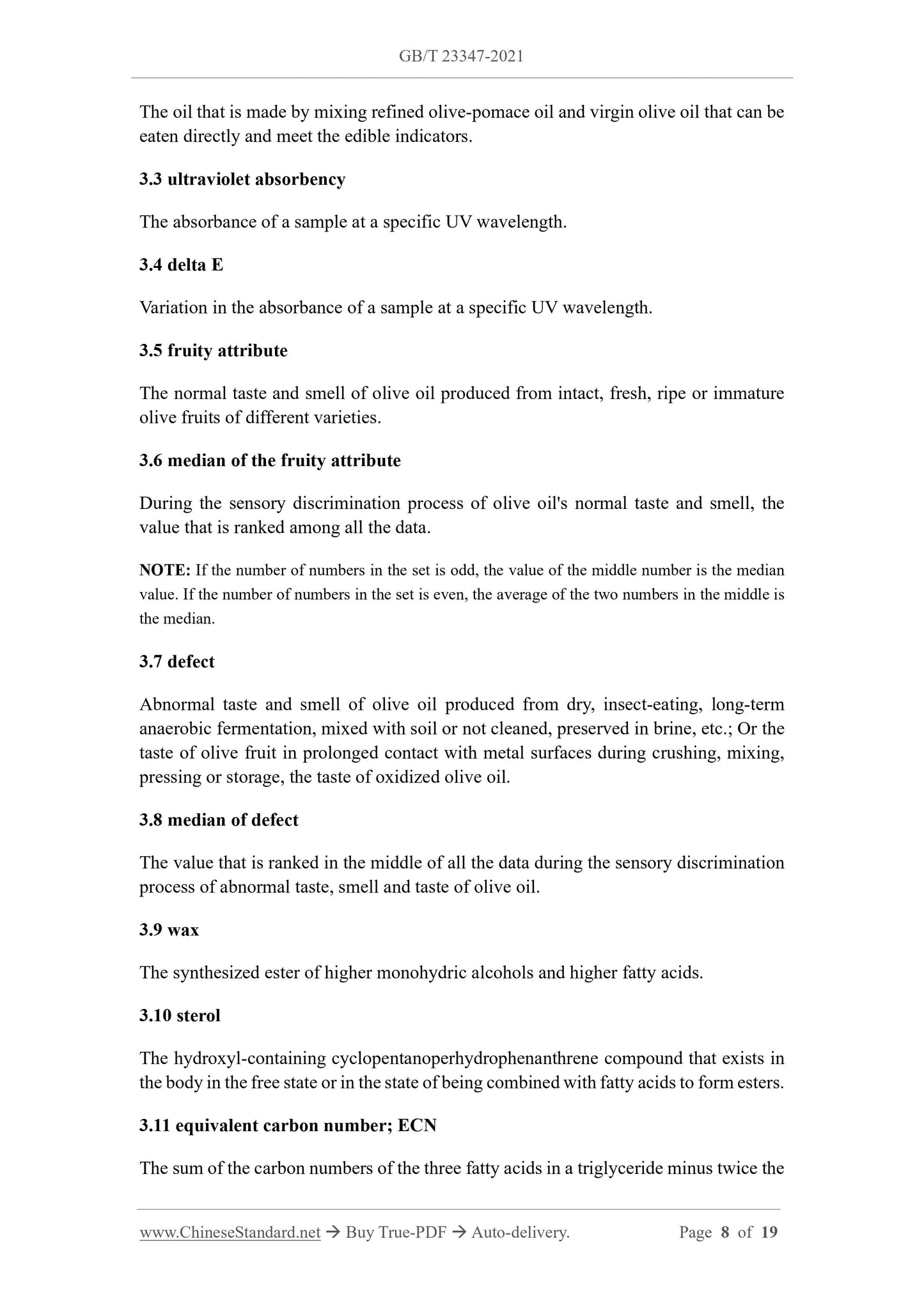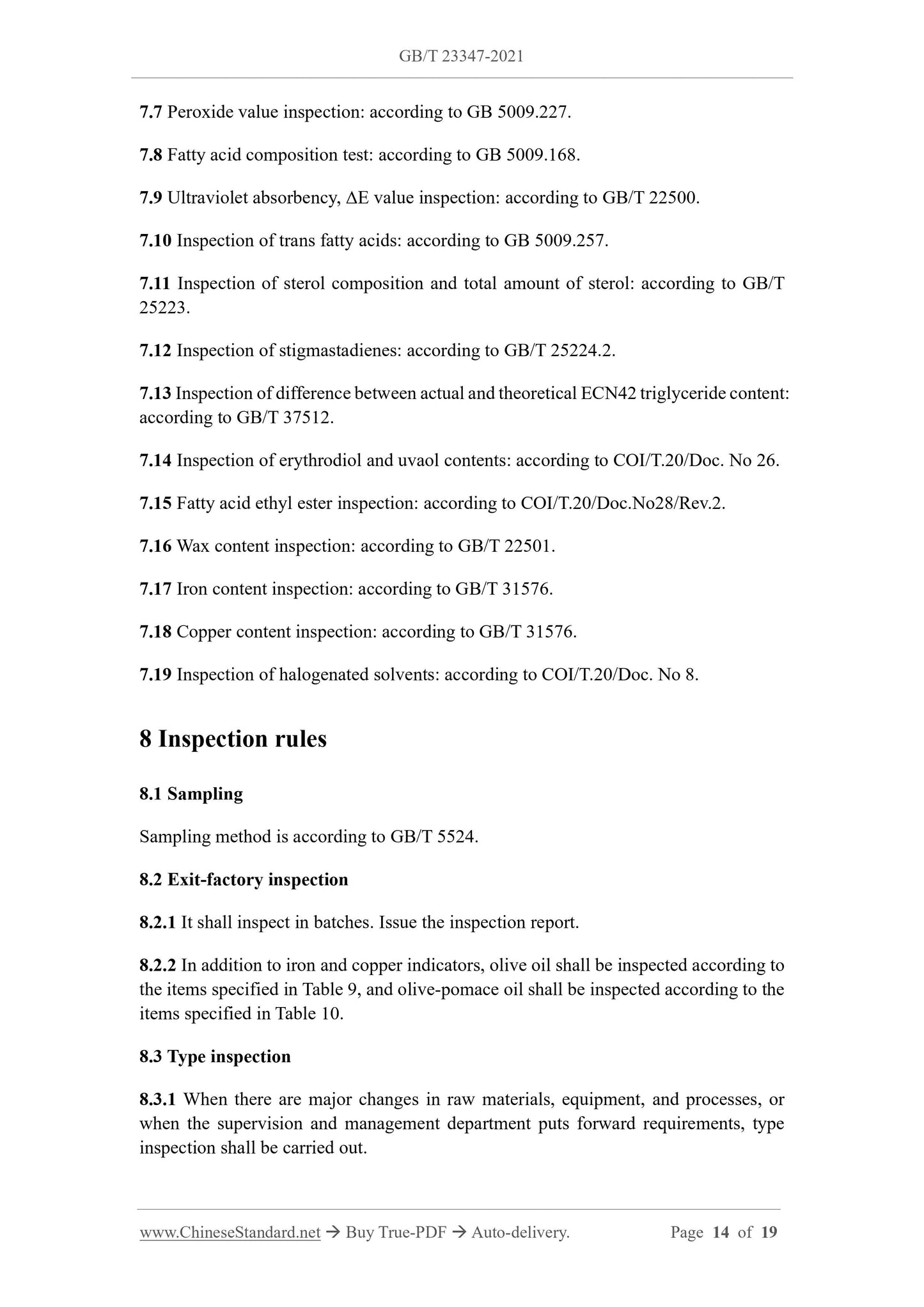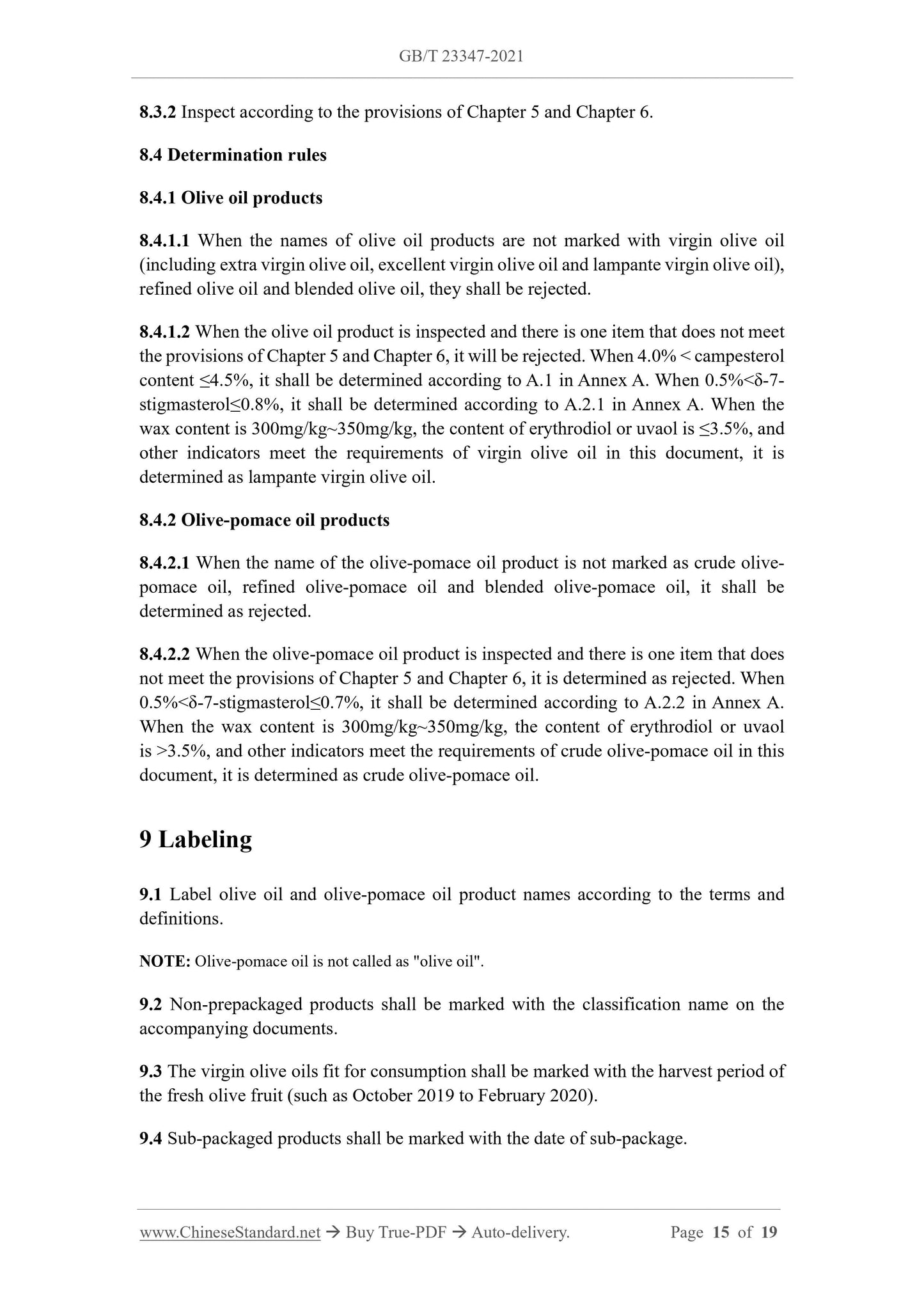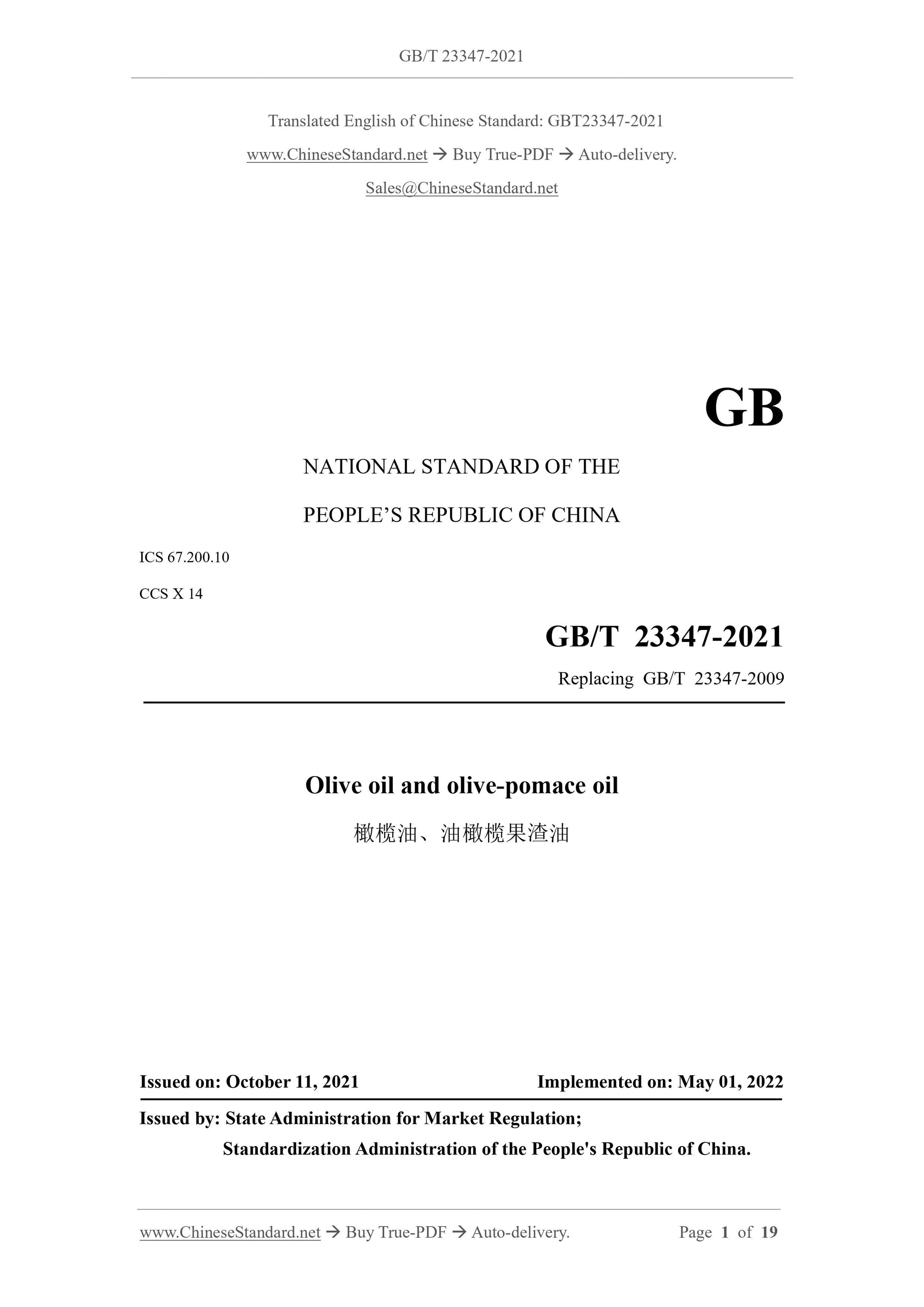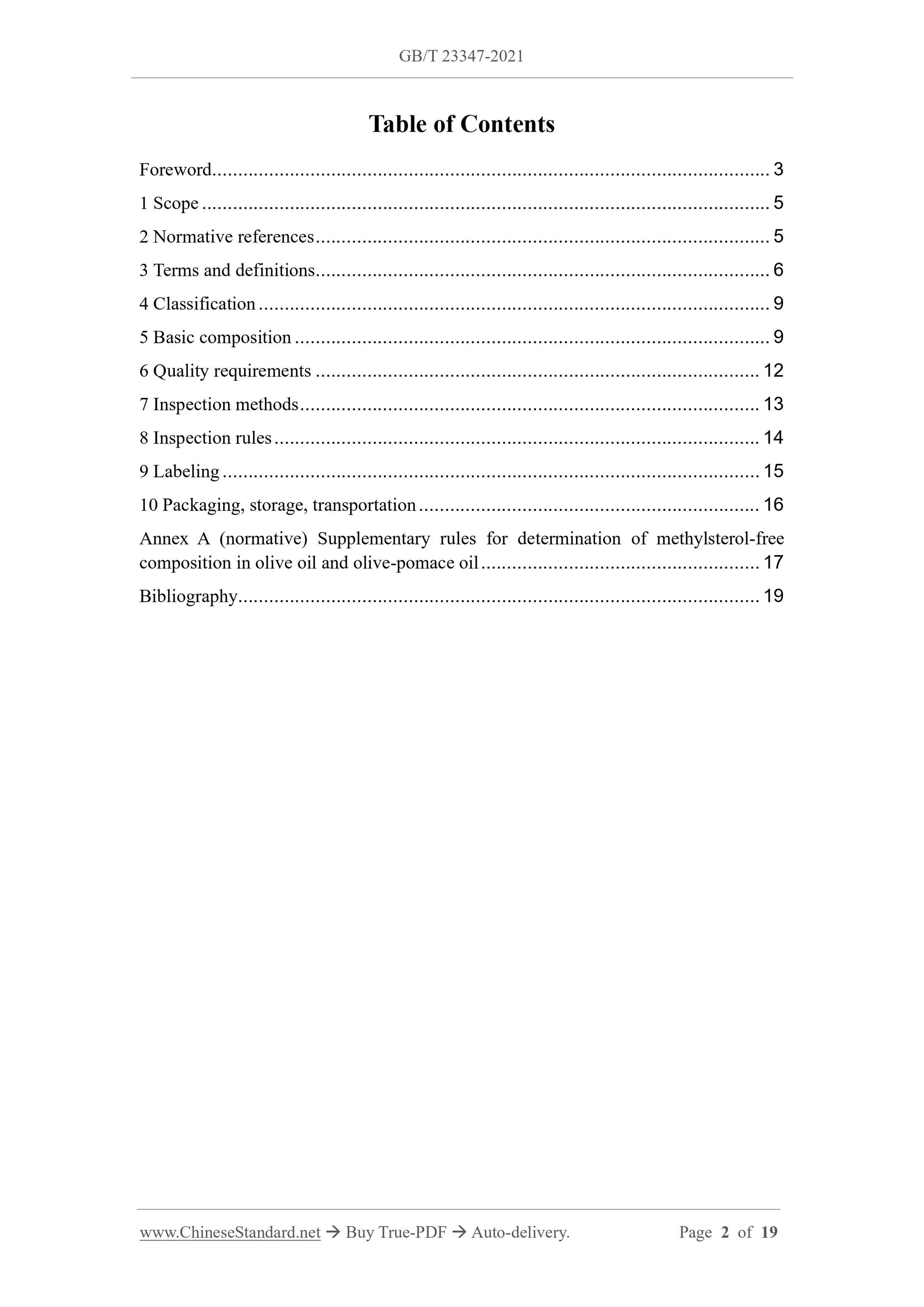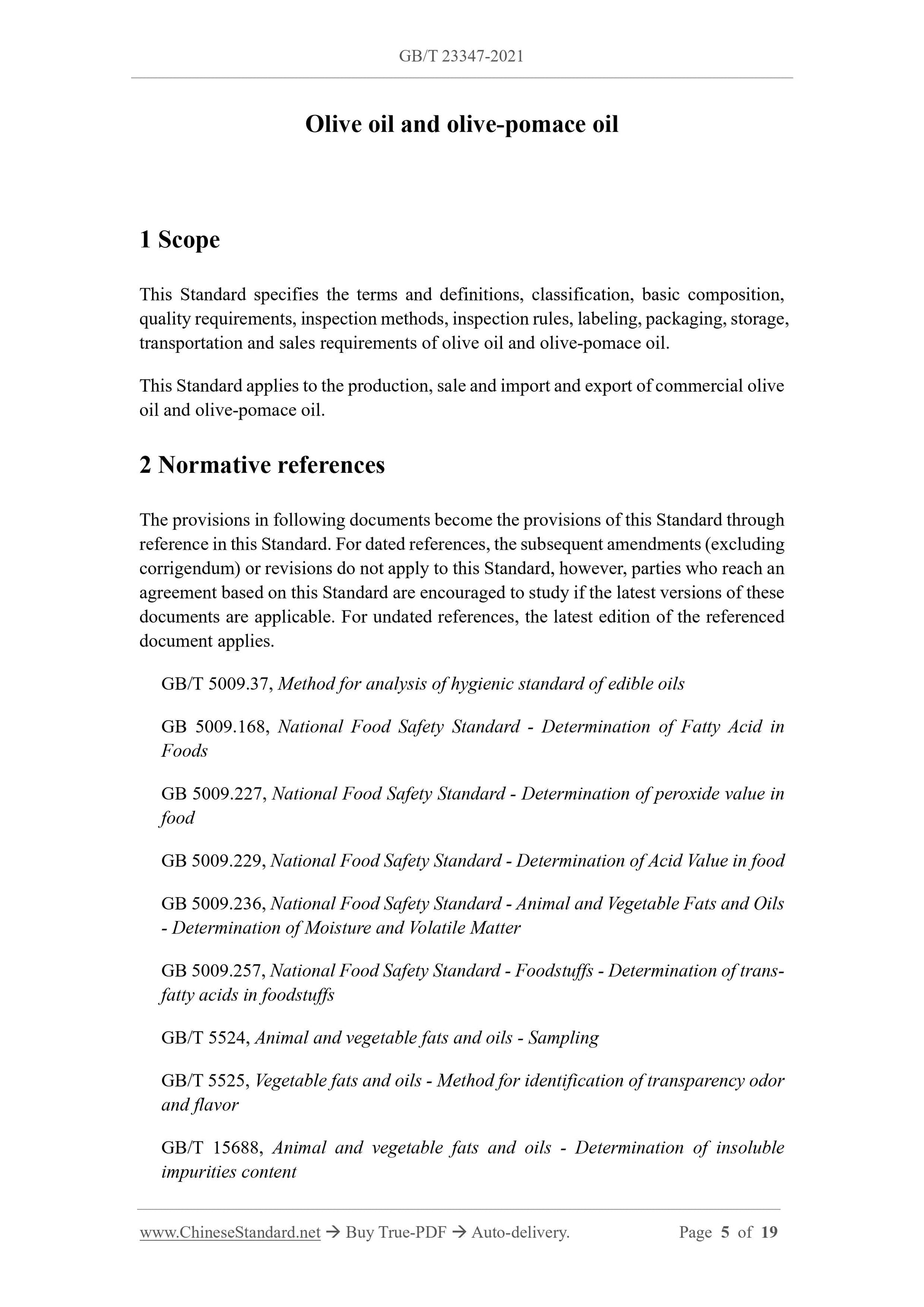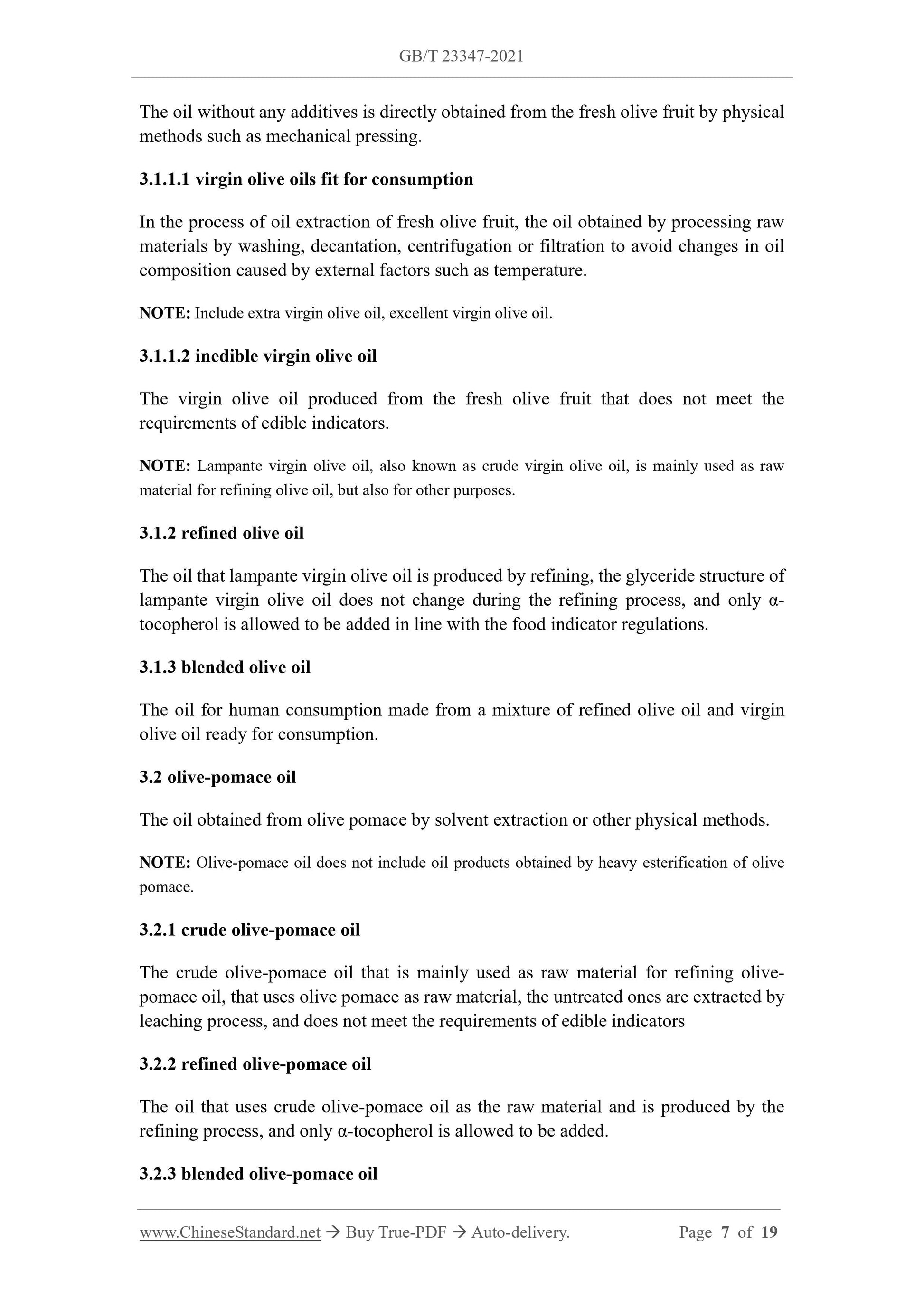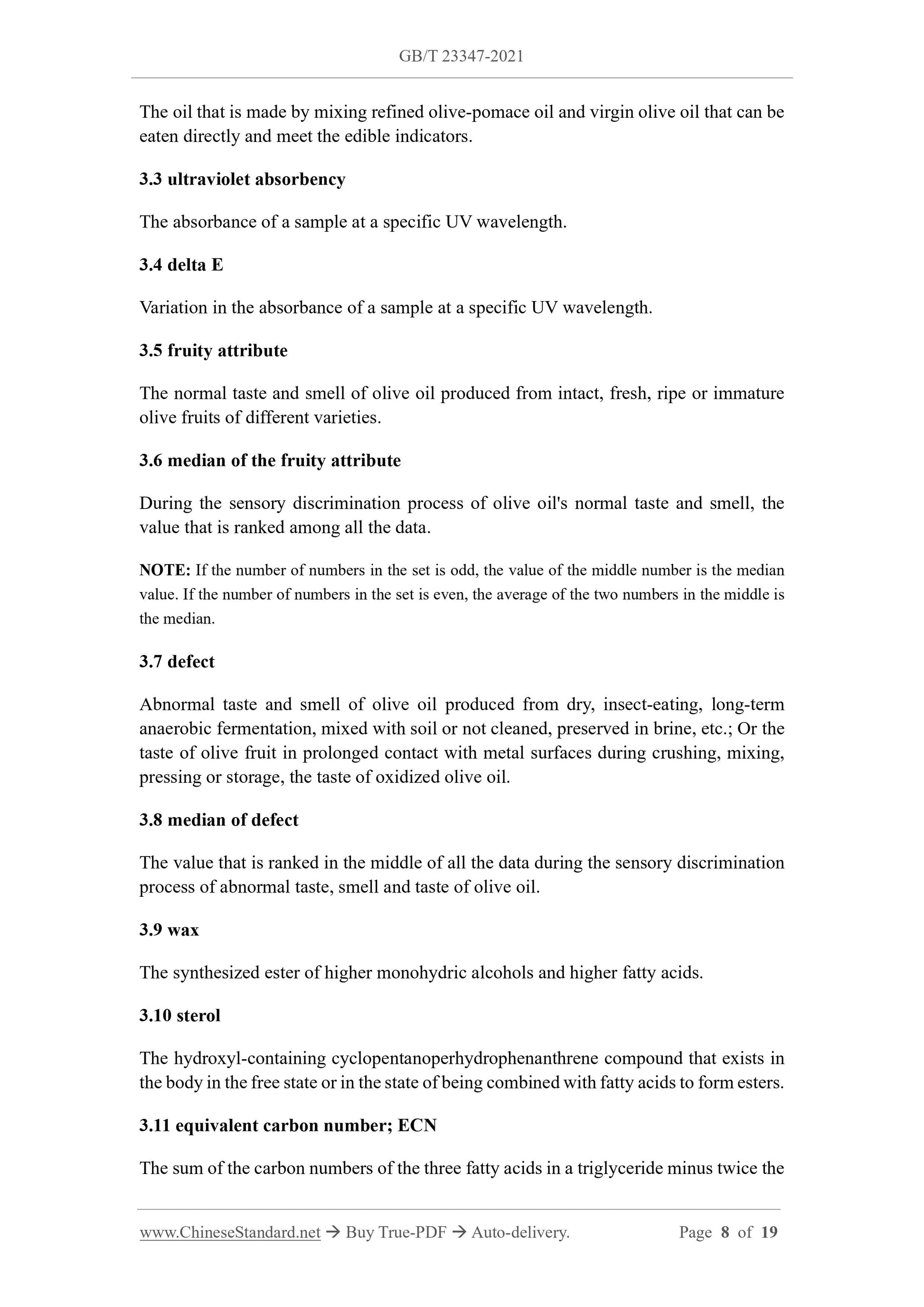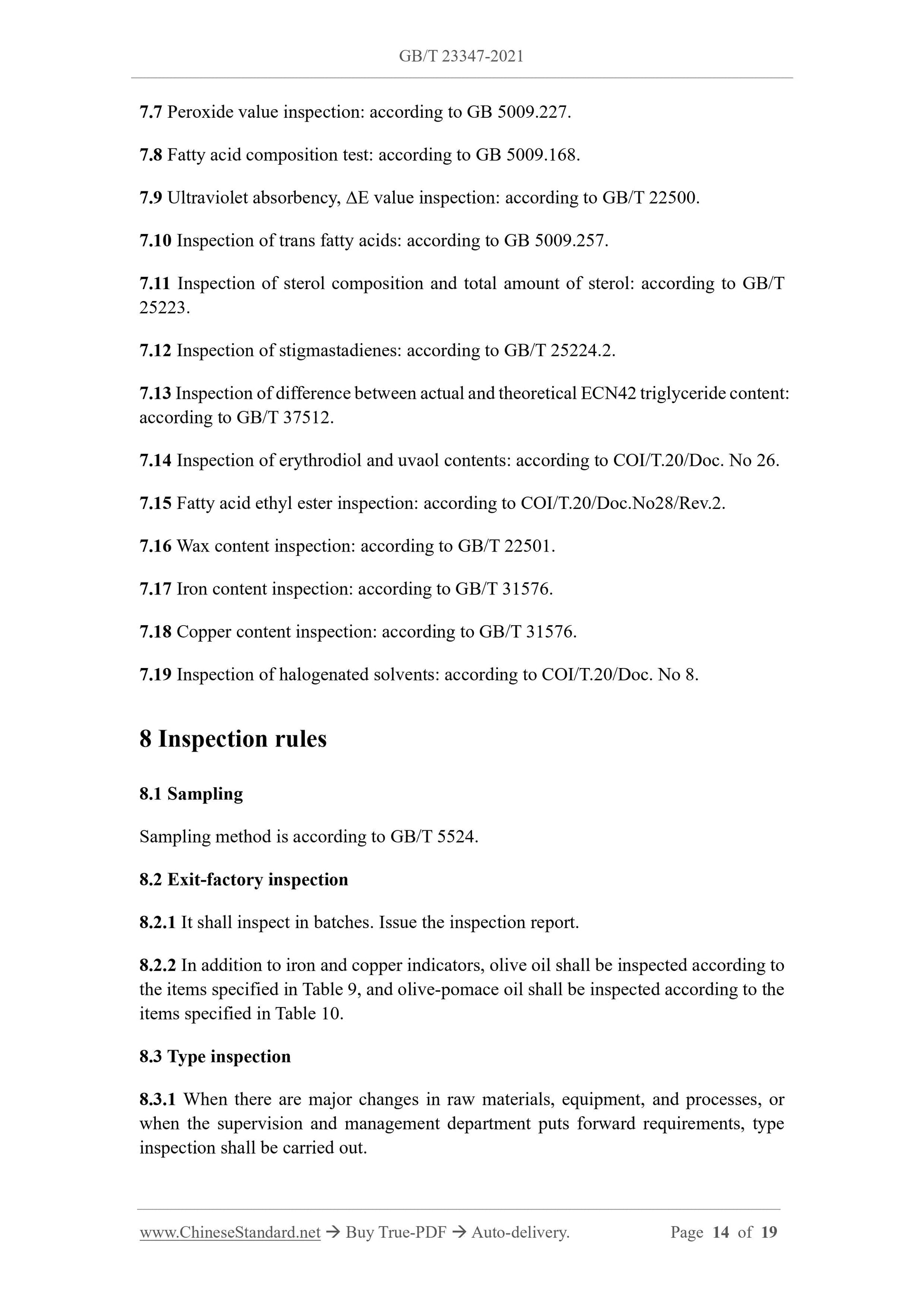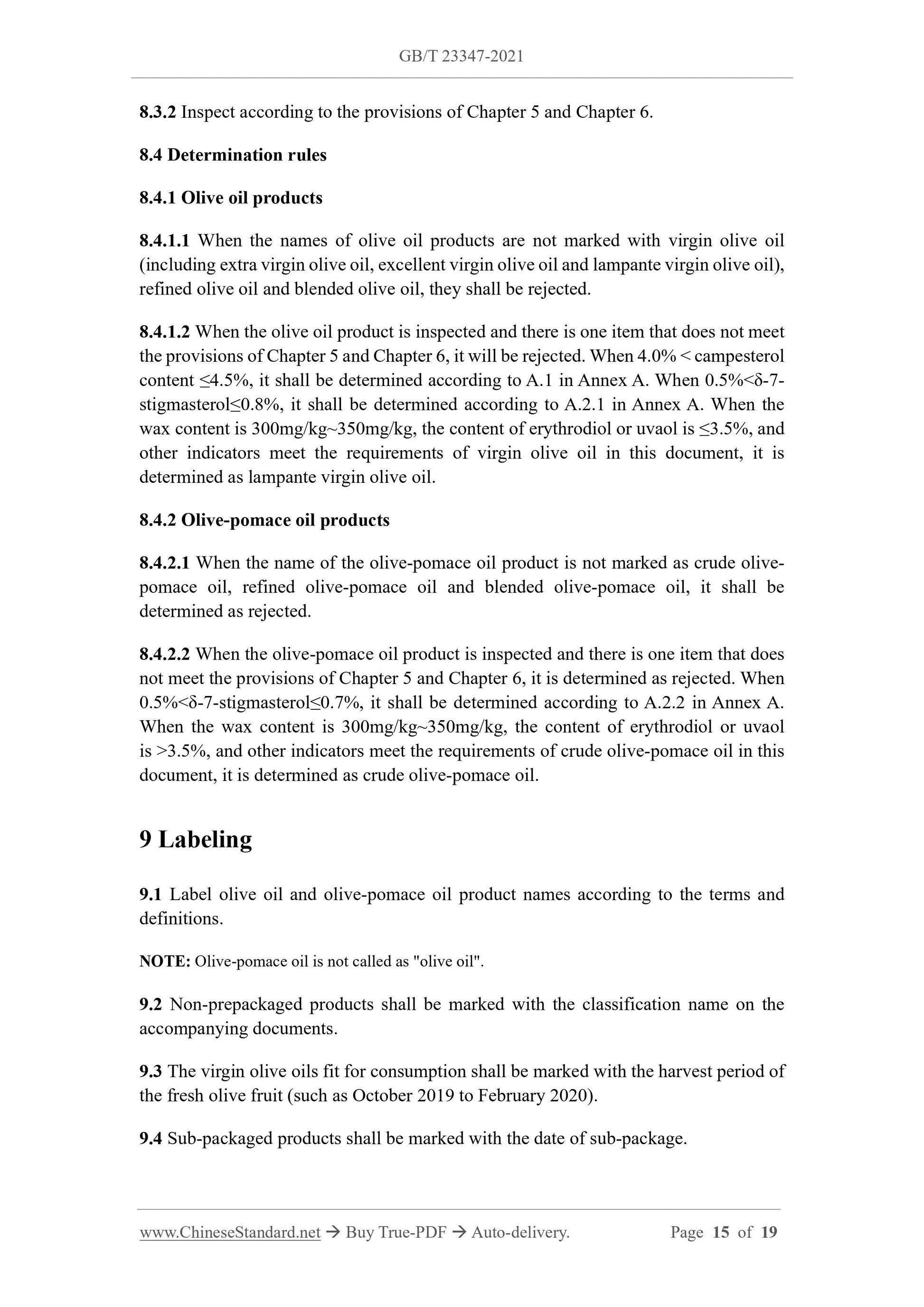1
/
of
7
www.ChineseStandard.us -- Field Test Asia Pte. Ltd.
GB/T 23347-2021 English PDF (GB/T23347-2021)
GB/T 23347-2021 English PDF (GB/T23347-2021)
Regular price
$230.00
Regular price
Sale price
$230.00
Unit price
/
per
Shipping calculated at checkout.
Couldn't load pickup availability
GB/T 23347-2021: Olive oil and olive-pomace oil
Delivery: 9 seconds. Download (and Email) true-PDF + Invoice.Get Quotation: Click GB/T 23347-2021 (Self-service in 1-minute)
Newer / historical versions: GB/T 23347-2021
Preview True-PDF
Scope
This Standard specifies the terms and definitions, classification, basic composition,quality requirements, inspection methods, inspection rules, labeling, packaging, storage,
transportation and sales requirements of olive oil and olive-pomace oil.
This Standard applies to the production, sale and import and export of commercial olive
oil and olive-pomace oil.
Basic Data
| Standard ID | GB/T 23347-2021 (GB/T23347-2021) |
| Description (Translated English) | Olive oil and olive-pomace oil |
| Sector / Industry | National Standard (Recommended) |
| Classification of Chinese Standard | X14 |
| Word Count Estimation | 14,115 |
| Issuing agency(ies) | State Administration for Market Regulation, China National Standardization Administration |
Share
